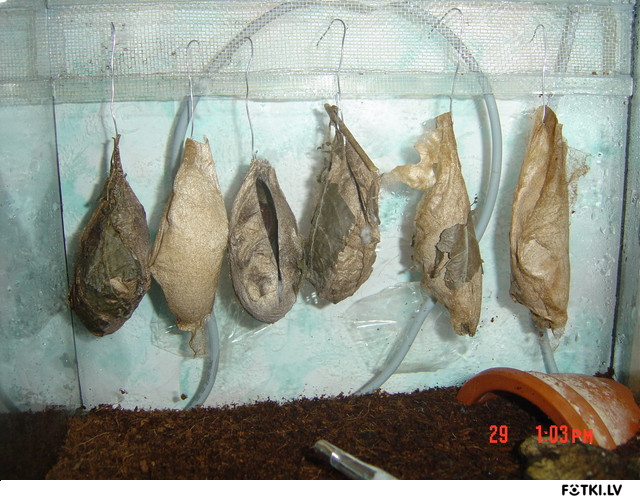Moths are underrated. Sure, everybody loves butterflies, but moths? Moths are the sneaky cousins of butterflies that hang out at night, eat your carpets as larvae, and don't have pretty colors. People make gardens to attract butterflies, but get all sorts of foul-smelling treatments to remove moths. Hell, a moth wound up on the cover of Silence of the Lambs. You could not do that with a butterfly.
This does not mean that moths cannot be interesting, beautiful creatures. Most folks will say that luna and comet moths look almost like butterflies, for example. Hummingbird moths look like little tiny bird-bug hybrids. Then there's this magnificent specimen, actual size not properly viewable on this blog:
The Atlas Moth (Attacus atlas) ranges from India to just above Australia. Its English name comes from its size or the wings resembling a simple map; its Cantonese name, "snake's head moth," comes from the weird tips on its forewings. The caterpillars are fond of several pleasant trees, including cherry and cinnamon. They do not eat at all as adults.

The Atlas Moth has the largest surface area of any lepidopteran. It may be outmatched in wingspan by another moth, but the wings are, we kid you not, as wide and high as a dinner plate (anywhere from 10-12 inches). This leaves the Atlas moth with 62 square inches of surface area to boast about. Females are larger than males, by the way, making all record-holders in this species women.

As if size was not enough to make this moth interesting, people have found uses for its silk as well. The silk is broken in Atlas Moths, but is nonetheless used to make Indian Fagara silk - said to be sturdier than most others. In Taiwan, women use the cocoons straight to make pocket purses. Stop complaining about moths; they make silk.
This does not mean that moths cannot be interesting, beautiful creatures. Most folks will say that luna and comet moths look almost like butterflies, for example. Hummingbird moths look like little tiny bird-bug hybrids. Then there's this magnificent specimen, actual size not properly viewable on this blog:
 |
| So here's the moth compared to human hands. |
The Atlas Moth (Attacus atlas) ranges from India to just above Australia. Its English name comes from its size or the wings resembling a simple map; its Cantonese name, "snake's head moth," comes from the weird tips on its forewings. The caterpillars are fond of several pleasant trees, including cherry and cinnamon. They do not eat at all as adults.

The Atlas Moth has the largest surface area of any lepidopteran. It may be outmatched in wingspan by another moth, but the wings are, we kid you not, as wide and high as a dinner plate (anywhere from 10-12 inches). This leaves the Atlas moth with 62 square inches of surface area to boast about. Females are larger than males, by the way, making all record-holders in this species women.

As if size was not enough to make this moth interesting, people have found uses for its silk as well. The silk is broken in Atlas Moths, but is nonetheless used to make Indian Fagara silk - said to be sturdier than most others. In Taiwan, women use the cocoons straight to make pocket purses. Stop complaining about moths; they make silk.



No comments:
Post a Comment